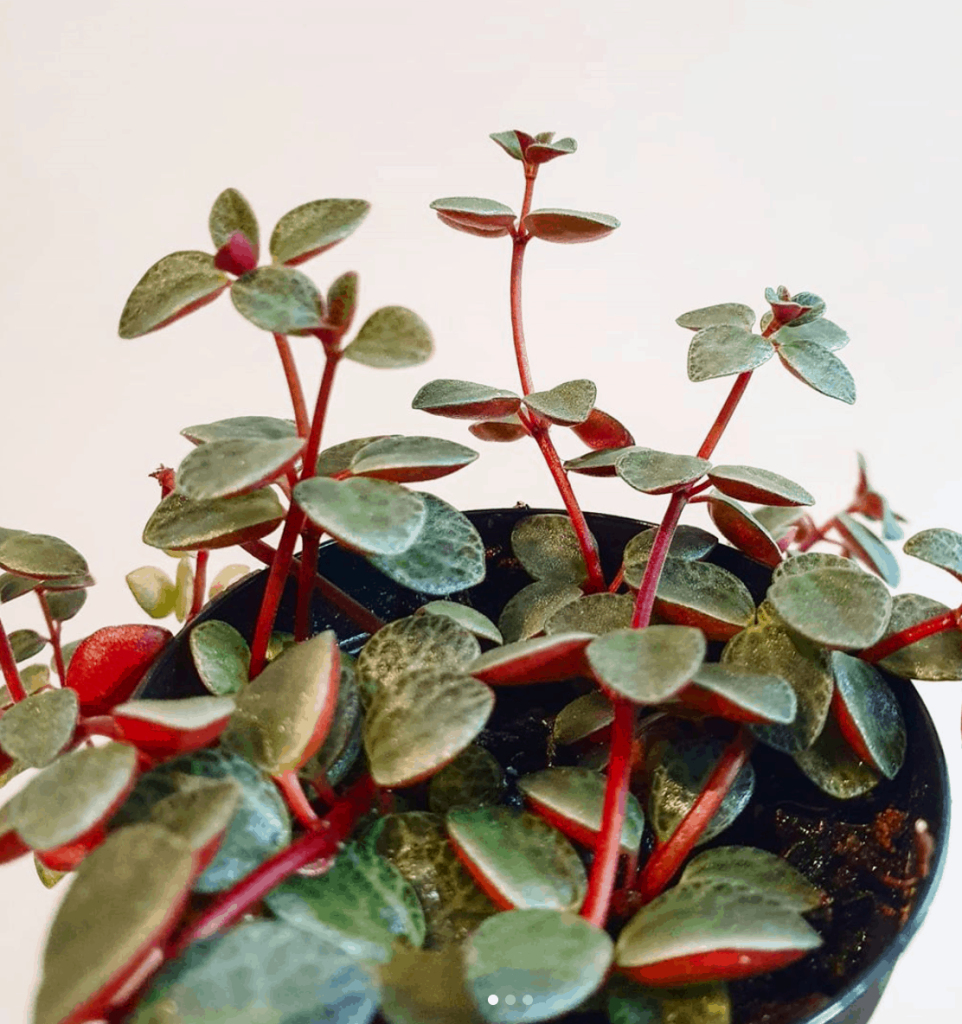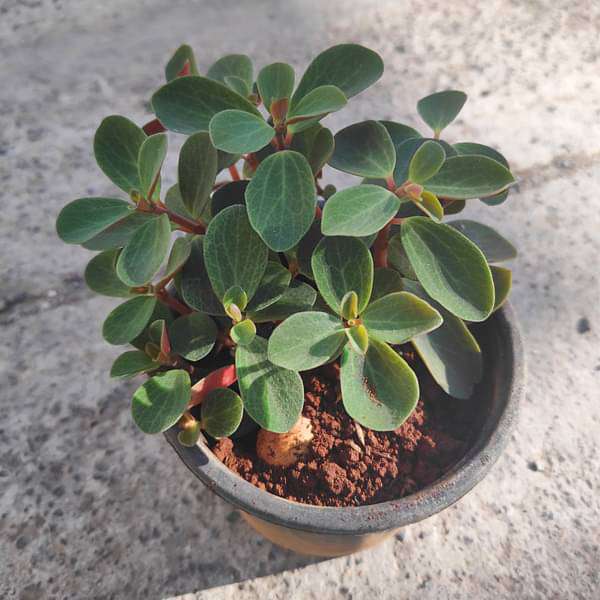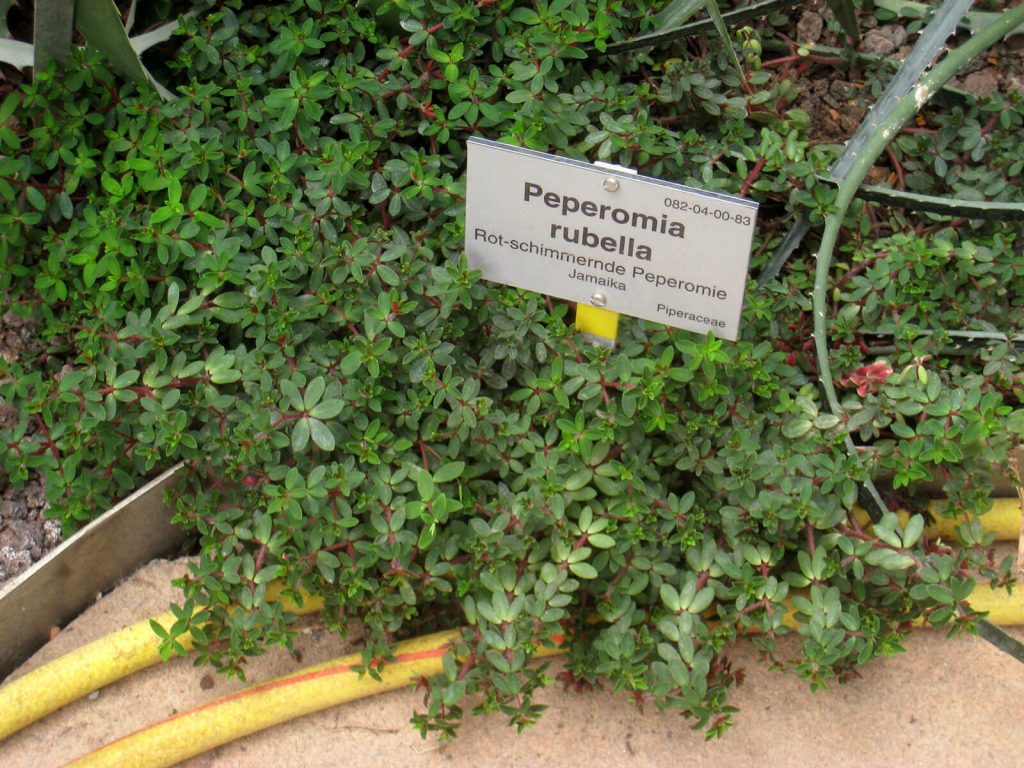Plants in the peperomia family are attractive and excellent for growing in the house; the more beautiful thing about these lovelies is that they can be grown both in pots and hanging baskets. Growing the peperomia plants in hanging baskets gives them the space to spread their vines like they’ll want to.
An exceptional plant in the peperomia family is peperomia rubella. Peperomia rubella is one plant that fits the office and bedside table excellently and this is due to its small size and tiny leaves.
This plant is relatively easy to grow, however, it is a delicate plant, and hence it requires a lot of attention to grow well. This peperomia rubella care and propagation guide will help you do the best for your plant.
Peperomia Rubella Explained
Peperomia rubella is a vining plant that is native to Jamaica, this plant is rare and this is the more reason it is loved and sought after by many. The plant is known by other names such as itsy bitsy peperomia, and we can attribute this name to its size.
Peperomia rubella will grow upright at first, and then when it gets to a certain height, its vines begin to make their way off the side of the pot.
The leaves of peperomia rubella are fleshy, with green color at the top of the leaves and scarlet red at the underside and stem. Not to forget that the rubella plant produces flowers, which come in greenish-white color, and bloom in the summer.
| Common name | Peperomia rubella |
| Scientific name | Peperomia rubella |
| Plant type | Perennial plant |
| Plant genus | Peperomia |
| Soil type | Moist, well-draining |
| Light | Bright, indirect light |
| Toxicity | Non-toxic |
| Native | Jamaica |
Peperomia Rubella Propagation

Propagating peperomia rubella is quite straightforward, similar to the rest of the peperomia plants.
The easiest way to propagate this plant is via stem or leaf cutting. This propagation process can also take place in water or the soil. Follow the steps below to learn how to propagate your peperomia rubella
Need For Propagation
- A healthy and robust peperomia rubella plant
- Sterilized scissors or knife
- Rooting hormone(optional)
- Pot
- Potting mix
- A jar or container of water
1. Stem Cutting
- Take a 6-inch long stem cutting from a healthy peperomia rubella plant. Make sure the stem you’re cutting is in good shape and has few leaves. Cutting should take place beneath the nodes.
- Remove all of the leaves from the lower portion of the stem, leaving only the top leaves, and dip the stem’s tip end in rooting hormone powder.
- Fill your pot with potting soil and place your plant in it. Cover any holes left open during the process of placing your cutting in the soil using your hands.
- Place a clear plastic bag over the container to provide a humid environment for your plant’s growth.
- Keep the soil moist by watering it frequently. It will take 4 to 6 weeks for your cutting to form a root.
- After it has developed its roots, you can start treating the plant with the regular rubella care guide after it develops new roots.
2. Propagating In Water
If you will be growing the peperomia rubella cutting in water, fill a clear container or jar halfway with clean water and place your stem cutting inside. It is recommended that you keep the water container in a room with plenty of indirect light. To avoid bacteria buildup, change the water as often as feasible.
Your plant should start to establish roots in four to six weeks. Don’t be in a hurry to get your cutting out of the water; the peperomia rubella can stay in the water for as long as five months. Ensure your plant develops strong roots before it is moved.
After that, you can place the plant in a potting mix that has previously been prepared.
3. Leaf Cutting
The stem-cutting process is the same as the leaf-cutting; however, in this case, the part of the plant that is being used is the leaf. You can divide the leaf into two (if it’s a large leaf), dip the leaf into a rooting hormone, and plant it in the soil. Ensure it is also covered for the greenhouse effect.
Your leaf will develop new leaves and roots in five to six weeks. The leaf that is planted may die, don’t worry, it can only mean that the nutrients in the leaf were taken in the process of propagation.
Peperomia Rubella Care Guide

The peperomia rubella care guide will help you give your plant the best resources, to get the best and most healthy plant. Below are guides that you can follow.
1. Light
The peperomia plants have a similar lighting requirement and the peperomia rubella is no different. The plant will thrive best when it is grown in bright, indirect light. Ensure that whatever location you are placing your plant in, it gets this level of light.
Although peperomia rubella can tolerate low light, it will affect its growth. Placing your plant in full direct sun can cause damage to the foliage, such as sunburn and fading. If you will be growing your plant outdoors, we suggest you grow it in partial shade.
2. Water
Watering is a necessary evil for most plants and especially peperomia plants. Watering is essential, however, it has a limit. The rubella plant, although loves to be moist, will not tolerate overwatering. Over-watering can cause wilting, root rot, etc. what then is the best way to water peperomia rubella?
Water this plant moderately, especially during the summer, and make use of room-temperature water. Ensure that the plant dries out before watering again.
You can dip your finger into the soil, or make use of a moisture checker to determine if your soil is still wet or dry. Remember that your plant has succulent leaves; hence it can tolerate a little neglect.
3. Soil
Peperomia rubella requires moist and well-draining soil. You must purchase a potting mix that can retain water enough to keep the soil moist and also drain water. You should mix your potting soil and make use of materials that are beneficial for your soil.
You can add ½ peat moss and ½ perlite also ensure you grow your plant in a soil pH of 5 to 7.5 and grow outdoors in USDA hardiness zones 10 to 11.
4. Humidity
Knowing that peperomia rubella is a tropical plant, it is no surprise that the plant can thrive well in high humidity; however, the plant will gladly grow in average humidity. The ideal humidity requirement for your peperomia rubella is 60-90%.
If the humidity in your home is not up to this, we suggest that you seek alternative means to increase humidity in the home for your plant. Examples of these are misting your plant regularly; this can increase the humidity around your plant. You can also purchase a plant humidifier for your plant, to provide adequate humidity.
5. Temperature
The good news is that peperomia rubella is not picky about temperature; you can be assured that your plant will grow well at the average home temperature. The ideal temperature for your rubella plant is 60 to 80 degrees F.
You should not place your plant below 59 degrees F as this can cause harm and eventually death for your plant. The plant can be grown outside too as long as it is not below 70 degrees F. ensure to keep it away from frost, AC, or heater vent.
6. Fertilizer
Peperomia rubella does need some fertilizing from time to time; to give it the supply of the required nutrients it needs for optimum growth. Fertilizers can help provide your plant with whatever nutrients it does not receive from the soil. The peperomia rubella will appreciate some type of fertilizer, and they are;
Slow-release fertilizer: These fertilizers have a slow-release rate when compared to other types of fertilizers; it takes time to supply the plant with all the nutrients that are in it. You will have to work the fertilizer into the soil, gently.
Water-soluble fertilizer: Water-soluble fertilizers are faster than slow-release fertilizers, they require that you first dilute with water before you apply them to your plant. You should follow the instructions on the label.
Organic fertilizers: These are fertilizers that contain organic materials and are void of chemicals i.e. fish emulsion etc.
Peperomia Rubella Growing Tips
- Your rubella plant does not require repotting often; this is because it likes to stay root-bound.
- Ensure that when you change your plant’s pot, you change it to a pot one inch bigger than the present one.
- Pruning helps to keep your plant in fine shape and also helps keep the damaged and dead leaves off. We recommend pruning as often as necessary.
- Ensure to make use of a clean and sterilized pruner to keep diseases and infections away.
- Your plant will do well when it is placed far from the scorching sun.
- While you wait until the water level dries out before watering again, ensure that it is not completely dry as this can cause harm to your plant. It can tolerate a little neglect; however, it does not do well with under-watering.
- Ensure you make use of the right soil for propagation. A cactus or succulent mix will do just fine.
- Ensure you stop fertilizing once the growing seasons are out and winter is beginning to set in i.e. late October.
Peperomia Rubella Care FAQs
Here are answers to questions that are sure to be on your mind after learning how to care for and propagate peperomia rubella.
Final Thoughts
The peperomia rubella has the perfect tiny, beautiful leaves that can fit in offices or bedside tables.
The plant is not only an indoor plant but can also be grown outside and in hanging baskets. Although rubella is easy to grow, you should follow a guide on how to give it your best.

